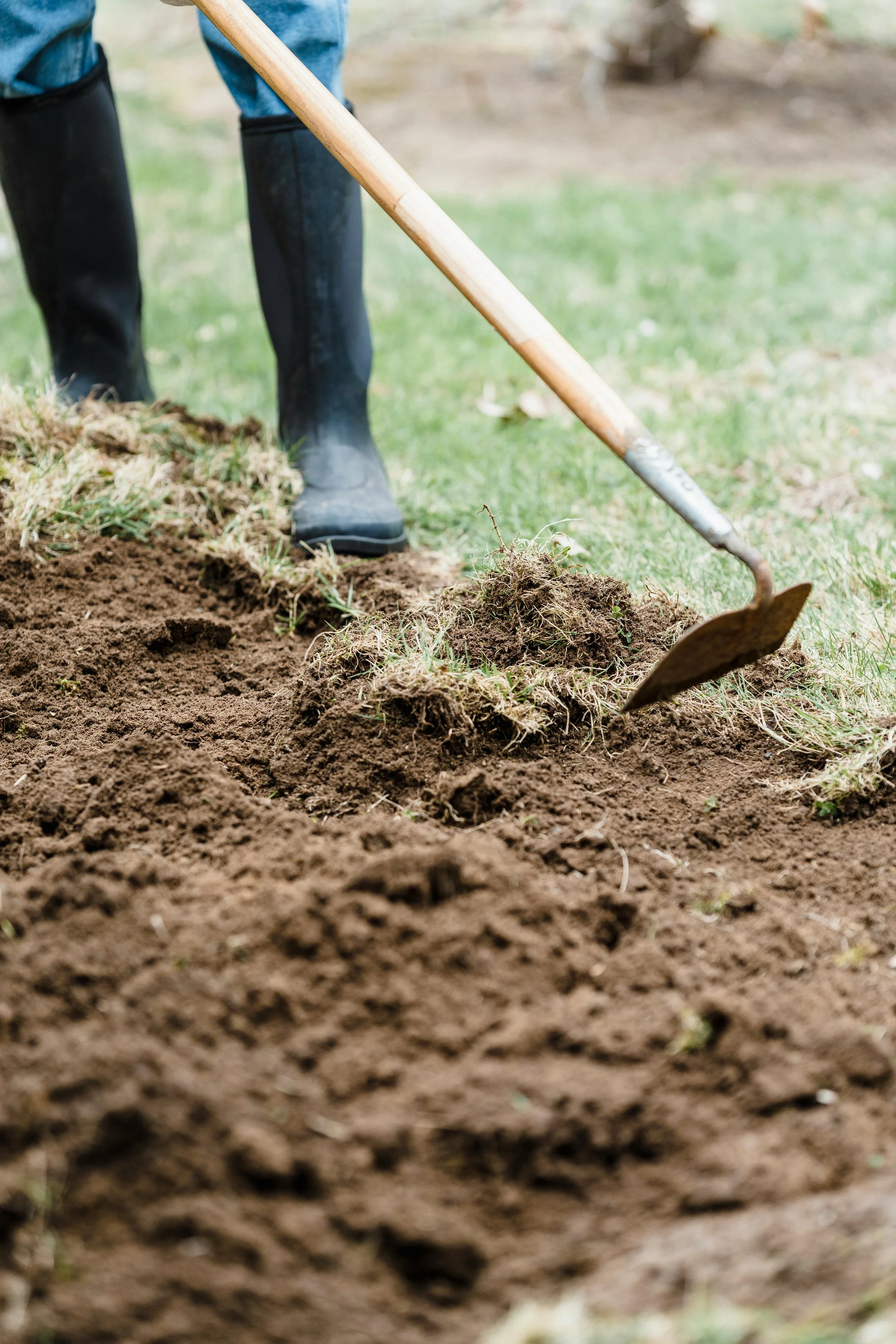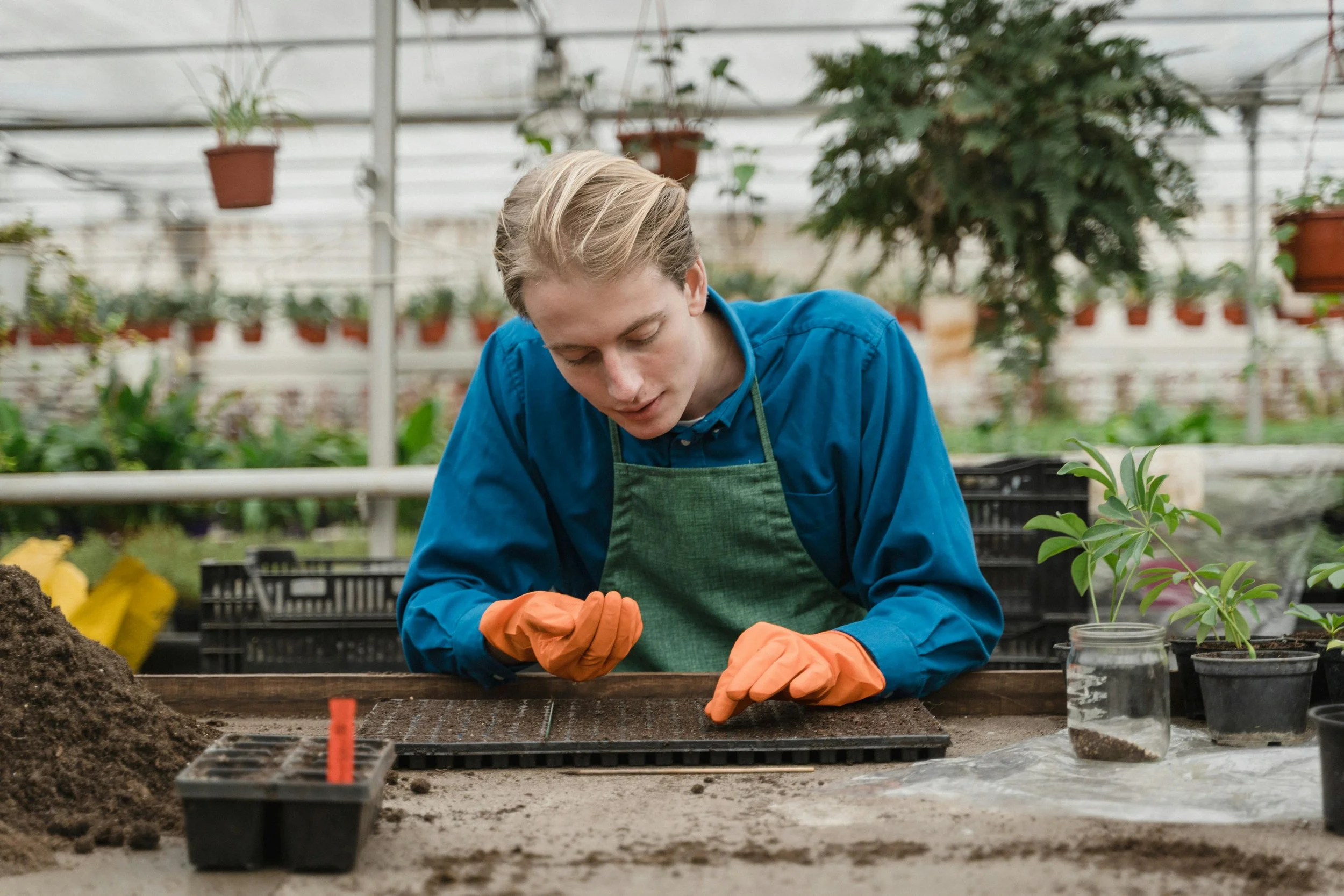FAQ: What gardening tasks should I do each season?
Gardening tasks vary by season and can be essential for maintaining a healthy and thriving garden throughout the year. Here's a general guide on what gardening tasks to focus on each season.
Spring:
Clean up: Remove debris, fallen leaves, and any dead plant material that accumulated over winter. Clear out old annuals and tidy up beds.
Prepare soil: Amend soil with compost or organic matter. Till or cultivate as needed for planting. Perform a soil test if it hasn’t been done recently.
Planting: Start planting seeds or transplanting seedlings of cool-season crops like lettuce, spinach, peas, and broccoli. Plant perennials, shrubs, and hardy annuals early in the season. Start warm-season crops indoors or in greenhouses.
Pruning: Prune shrubs and trees before they begin active growth. Remove dead, damaged, or crossing branches. Cut back ornamental grasses and perennials if not done in winter.
Weeding: Begin regular weeding early to keep them under control before they spread.
Fertilizing: Apply fertilizer to trees, shrubs, and perennials that benefit from spring feeding. Feed lawns once they begin growing actively.
Mulching: Apply mulch to help retain moisture, suppress weeds, and regulate soil temperature. Refresh or replace old mulch if needed.
Tool Maintenance: Clean, sharpen, and oil garden tools. Check hoses, sprinklers, and irrigation systems for leaks or clogs.
Pest & Disease Monitoring: Begin checking for early signs of pests and diseases. Apply preventive treatments or barriers if needed.
Divide & Transplant: Divide crowded perennials and transplant them while the weather is still cool.
Summer:
Watering: Monitor soil moisture regularly and water deeply as needed, especially during hot and dry periods. Early morning watering helps reduce evaporation and prevent fungal issues.
Deadheading: Remove spent flowers to encourage continuous blooming and maintain a tidy appearance in flower beds.
Harvesting: Harvest vegetables, fruits, and herbs as they ripen. Regular harvesting promotes continued productivity and prevents overripening or spoilage.
Pest Control: Monitor plants closely for pests and diseases. Use methods like hand-picking, organic sprays, neem oil, or introducing beneficial insects. Remove infected leaves or plants promptly.
Supporting Plants: Stake, cage, or trellis tall or heavy plants like tomatoes, beans, or sunflowers to keep them upright and healthy.
Pruning: Perform light pruning to maintain shape, remove dead or diseased branches, and improve airflow. Avoid heavy pruning during extreme heat.
Mulching: Replenish mulch to retain soil moisture, reduce weeds, and regulate root temperature.
Weeding: Continue regular weeding to prevent competition for nutrients and water.
Feeding: Fertilize heavy-feeding crops and flowering plants to maintain strong growth during peak production. Use slow-release or liquid fertilizer based on plant needs.
Lawn Care: Mow regularly, keeping blades high to protect grass from heat stress. Water deeply and less frequently to encourage deep roots.
Container Care: Check potted plants daily as containers dry out faster in the heat. Fertilize regularly and move pots into partial shade if plants show signs of stress.
Fall:
Planting: Plant spring-blooming bulbs such as tulips, daffodils, and crocuses. Sow cool-season crops like kale, carrots, radishes, and spinach. Fall is also a great time to plant trees and shrubs so they can establish roots before winter.
Cleaning Up: Remove annuals that have finished blooming or are dying back. Cut back perennials that benefit from fall pruning, but leave some seed heads for winter interest and wildlife. Clear out dead leaves and debris from beds to reduce pests and disease.
Mulching: Apply a thicker layer of mulch around plants to insulate roots and protect against temperature swings and frost. This also helps prevent soil erosion during winter rains or snow.
Fertilizing: Apply a balanced or low-nitrogen fertilizer to perennials, trees, and shrubs that benefit from fall feeding. Avoid fertilizing plants that are already going dormant.
Dividing: Divide and transplant overgrown or crowded perennials while the soil is still warm, giving them time to settle in before frost.
Composting: Start or add to a compost pile using fall leaves, garden clippings, and spent annuals. Shred larger materials to speed up decomposition.
Weeding: Pull late-season weeds to prevent them from setting seed and spreading next spring.
Lawn Care: Rake fallen leaves off the lawn, reseed bare spots, and apply fall fertilizer to encourage strong root growth over winter.
Tool Maintenance: Clean and store garden tools, hoses, and containers. Sharpen blades and coat metal tools with oil to prevent rust.
Pest & Disease Prevention: Remove any diseased plant material and sanitize tools to reduce the risk of issues in the next growing season.
Winter:
Protecting Plants: Apply mulch around the base of tender or newly planted perennials, shrubs, and trees to insulate roots from freezing temperatures. Use burlap or frost covers to shield vulnerable plants from harsh winds or snow.
Pruning: Prune dormant trees and shrubs to improve shape and health. Focus on removing dead, damaged, or crossing branches. Avoid heavy pruning on plants that bloom on old wood (like hydrangeas or lilacs), as it can remove next season’s flower buds.
Planning: Use the slower winter months to plan next year’s garden layout. Review what worked (and what didn’t), update your garden journal, and browse seed catalogs. Place orders early for the best selection.
Tool Maintenance: Clean, sharpen, and oil garden tools before storing them. Drain and store hoses, and winterize irrigation systems to prevent freezing damage.
Indoor Gardening: Tend to houseplants by adjusting watering schedules for lower light and humidity. Rotate plants for even growth and check for pests like spider mites or fungus gnats.
Starting Seeds: In late winter, begin starting seeds indoors for early spring planting. Gather seed trays, lights, and quality potting mix in preparation.
Composting: Continue adding kitchen scraps and yard debris to your compost pile. Turn the pile occasionally if weather allows to keep decomposition going.
Wildlife Support: Provide food and water for birds and other helpful garden wildlife. Clean feeders regularly and keep birdbaths ice-free if possible.
Final Thoughts
Gardening is a year-round journey, and each season plays a vital role in keeping your plants, soil, and outdoor spaces healthy and productive. From spring’s burst of new growth to summer’s ongoing maintenance, fall’s essential preparations, and winter’s quiet planning, staying in tune with seasonal tasks ensures your garden stays vibrant and well cared for.
By breaking your gardening routine into manageable, season-specific steps, you’ll not only reduce stress and avoid feeling overwhelmed—you’ll also set yourself up for long-term success. Whether you’re growing vegetables, flowers, or simply tending a patch of green, a little effort each season can lead to a more beautiful, bountiful garden all year long.




